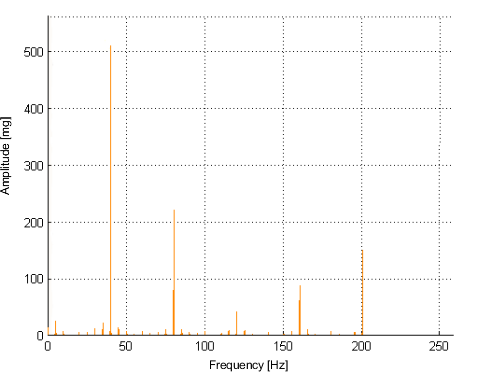Normally in an envelope analysis, the frequency spectrum of the envelope signal is evaluated. Suppressing the steady component gives a frequency spectrum that exhibits only one increased amplitude at the frequency of the low-frequency sinusoidal oscillation.
The envelope signal of the periodically peaked excited machine resonance shows mostly increased amplitudes in the shock pulse repetition rate and its multiples.
The envelope analysis is thus a method for differentiating between harmonic causes (imbalance, orientation) and impact-related causes (roller bearing damage, gearing damage, etc.).
Conversely, it must be stated that harmonic causes in an envelope spectrum cannot be determined accordingly.
通常在包络分析中,是对包络信号的频谱进行评估。抑制稳态分量得到的频谱在低频正弦振荡频率下仅表现出一个增加的幅度。
周期性峰值激励的机器共振的包络信号主要显示了冲击脉冲重复率及其倍数的振幅增加。
因此,包络分析是区分谐波原因(不平衡、方向)和冲击相关原因(滚子轴承损坏、齿轮损坏等)的一种方法。
相反,必须指出的是,包络频谱中的谐波原因无法相应地确定。

Fig.: Time signal with envelope
图: 时域的包络信号

Fig.: Resulting frequency spectrum of the envelope
图: 包络的频谱